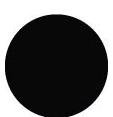 |
 |
 |
||||||||||||||||||||||||||||||
Belle Époque c'est demain Vincent Michéa, born in 1963, attended the École Supérieure d'Arts Graphiques in Paris and began painting in 1986. From 1988-1991, he worked as an assistant to the Polish artist, Roman Cieslewicz, well-known for his poster work. Michéa then moved to Africa and set up the graphic studio, '100% Dakar'. He returned to France in 1996, where he lives today in Paris and Lothringen. Examples of his work can be seen through November in the exhibition, 'Black Paris', which deals with the history and iconography of Blacks in Paris, currently on at the Museum of World Culture in Frankfurt/M. For many years, Michéa explored the genre of self-portraiture. By the end of 2002, he began a completely new body of work, entitled 'Belle Époque', in which he has copied record covers from his collection spanning 50 years of African Popular Music, in an attempt to free himself from his previous themes and painting styles. The current exhibition encompasses twelve smaller formats (63 x 63cm, Acrylic and Oil on paper, mounted on wood) from the period 2003-2005 and four large works from the portrait-series begun in 2006 (130 x 130cm, acrylic on canvas). From the immense treasure of his vinyl collection, the result of 10 years of passionate accumulation, he chose those examples in which the cover motif seemed to stand out as typical of the music industry iconography and where either the music or the musicians belonged to his all-time favourites. By transforming these printed, mass-produced images into painted originals he creates an inversion of origin, as well as a belated tribute to the usually anonymous graphic designer and finally he pays a visual homage to a constitutive facet, which, although ignored by established critics, is gaining ever-more attention, as African culture is re-discovered: the many-facetted popular music of this continent, such as Marimba, Mambo, Jazz, Samba, Rumba, Cha-Cha, Blues, etc., topographically at home in the western part of Africa and the Congo. After Michéa photographs his subject matter, he digitally reworks the typography, pixels, etc. and then prints the canvas with the contours of the image. Now the actual painting process begins. The artist depicts the motifs with great attention to detail, simultaneously devoted and distanced towards the image, keeping all the details and hardly manipulating the source, but allowing the surface to be painterly. Small irregularities and asymmetry are proof of this. On the other hand, he focuses on typical characteristics of a machine printing process, such as the division of the surface into pixels. In this sense, he proves to be a Neo-Pop-Artist, selecting graphic design fragments and, hence, successfully jumping from 'low' to 'high' art. Viewing Michéas work, his sources can be divided into several categories: One group consists of the typical round labels found at the centre of an LP, so they seem to have a straightforward, documentary character, reflecting the graphic style of the 50s (№ 57) - here the artist has additionally added the rubbed impression of the actual LP in an illusionistic Trompe l'œil-style (№ 54, 55, 56); the second group consists of very colourful, ornamental pop-style designs, typical of the 60s and 70s, often embellished with the protagonist's portrait (№ 28). In № 12 and 13, formal and photographical elements are interwoven components, the viewer can place these works in the appropriate time-frame due to the depicted automobiles and the clothing style. The bridge to his most recent work, begun last year, are the portraits of famous African interpreters, such as № 19, in which the impressive profile of Liziba Lilumi Ongando is all the more intense for its straightforward simplicity. While the body of small-scale album-cover work represents a subjective distillation of popular African music since 1945, the content of the 130 x 130 cm portraits is more individualized and artistically precise - both emotionally charged and a documentary homage to the charismatic interpreters, relatively unknown outside the African continent, apart from a handful of admirers. There is nothing to distract from the format-filling presence of the faces, neither lettering nor colourful, strong patterns: clearly leaving the album-cover dimensions far behind, reducing the colour to black and one single other ground shade, the extreme grid reflecting the photographically complete source - these works present a superior style on the border of abstraction. The larger-than-life faces of M'Pongo Love and Aminata Fall, glamorous divas imbibed with vibrating energy, clearly embody a completely different feminine standard of beauty from what is commonly considered to be the European ideal. Vincent Michéa works in his œuvre to retain disappearing cultural facts and creates a posthumous stage, an archive of African pop and jazz music of foregone decades, in which a hidden tonal storehouse and a blueprint of his own personality are reflected. In this way, his initial aversion of self-portrait has, in a roundabout way, come back into his focus.
|
|||
| retour | |||